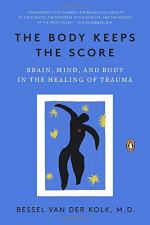
|
| Name: _________________________ | Period: ___________________ |
This quiz consists of 5 multiple choice and 5 short answer questions through Part Three: The Minds of Children.
Multiple Choice Questions
1. What is NOT one of the actions Van der Kolk says he hopes the reader will take in relation to trauma?
(a) Face it.
(b) Explore it.
(c) Dismiss it.
(d) Prevent it.
2. At the end of Chapter 2: Revolution in Understanding Mind and Brain, Van der Kolk explains that when he saw the limitations of drugs in the treatment of trauma, he began to look for treatments that were more what?
(a) Invasive.
(b) Natural.
(c) Affordable.
(d) Aggressive.
3. Which kind of ACE scores are associated with the greatest chances of problems relating to trauma?
(a) High.
(b) Low.
(c) Constant.
(d) Flat.
4. What part of her client's body was the massage therapist holding when her client called out to see where she had gone?
(a) Her back.
(b) Her neck.
(c) Her head.
(d) Her feet.
5. How many millions of children are spending all or part of their childhoods in foster care in the United States at any given time?
(a) 1.
(b) 4.
(c) 3/4.
(d) 1/2.
Short Answer Questions
1. During what period of Darwin's career did he write The Expression of the Emotions in Man and Animals?
2. In what year was the DSM-IV published?
3. The majority of the patients previously diagnosed as having Borderline Personality Disorder reported being the victim of abuse before what age?
4. What is NOT an element described by W. H. Auden as one that resents "approaches that are too intense" (125)?
5. What is the name of the woman featured in the discussion of massage therapy in Chapter 6: Losing Your Body, Losing Your Self?
|
This section contains 252 words (approx. 1 page at 300 words per page) |

|




